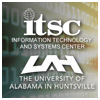Seamless online science workflow development and collaboration using IDL and ENVI Service Engine
| Title | Seamless online science workflow development and collaboration using IDL and ENVI Service Engine |
| Publication Type | Conference Paper |
| Year of Publication | 2013 |
| Authors | A. Harris, T, Maskey, M, Ramachandran, R |
| Conference Name | AGU |
| Date Published | 12/2013 |
| Publisher | AGU |
| Conference Location | San Francisco, CA |
| Keywords | CMAC, Collaborative Workbench, CWB, ENVI, IDL |
| Abstract | The Exelis-developed IDL and ENVI software are ubiquitous tools in Earth science research environments. The IDL Workbench is used by the Earth science community for programming custom data analysis and visualization modules. ENVI is a software solution for processing and analyzing geospatial imagery that combines support for multiple Earth observation scientific data types (optical, thermal, multi-spectral, hyperspectral, SAR, LiDAR) with advanced image processing and analysis algorithms. The ENVI & IDL Services Engine (ESE) is an Earth science data processing engine that allows researchers to use open standards to rapidly create, publish and deploy advanced Earth science data analytics within any existing enterprise infrastructure. Although powerful in many ways, the tools lack collaborative features out-of-box. Thus, as part of the NASA funded project, Collaborative Workbench to Accelerate Science Algorithm Development, researchers at the University of Alabama in Huntsville and Exelis have developed plugins that allow seamless research collaboration from within IDL workbench. Such additional features within IDL workbench are possible because IDL workbench is built using the Eclipse Rich Client Platform (RCP). RCP applications allow custom plugins to be dropped in for extended functionalities. Specific functionalities of the plugins include creating complex workflows based on IDL application source code, submitting workflows to be executed by ESE in the cloud, and sharing and cloning of workflows among collaborators. All these functionalities are available to scientists without leaving their IDL workbench. Because ESE can interoperate with any middleware, scientific programmers can readily string together IDL processing tasks (or tasks written in other languages like C++, Java or Python) to create complex workflows for deployment within their current enterprise architecture (e.g. ArcGIS Server, GeoServer, Apache ODE or SciFlo from JPL). Using the collaborative IDL Workbench, coupled with ESE for execution in the cloud, asynchronous workflows could be executed in batch mode on large data in the cloud. We envision that a scientist will initially develop a scientific workflow locally on a small set of data. Once tested, the scientist will deploy the workflow to the cloud for execution. Depending on the results, the scientist may share the workflow and results, allowing them to be stored in a community catalog and instantly loaded into the IDL Workbench of other scientists. Thereupon, scientists can clone and modify or execute the workflow with different input parameters. The Collaborative Workbench will provide a platform for collaboration in the cloud, helping Earth scientists solve big-data problems in the Earth and planetary sciences. |
- Log in to post comments
- Google Scholar




